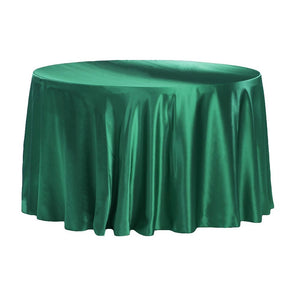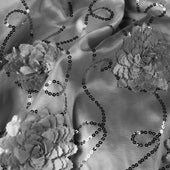Just by hearing the word satin, we can conjure images of luxury, smoothness, and elegance. Satin is a well-known material for evening gowns, bed sheets, or tablecloths. But where does satin come from? That’s the million-dollar question we ask and will answer.
What is Satin?
We might think that satin is a specific type of material. Rather, it is a type of weave.
Satin is a special type of fabric that is smooth and shiny on one side, and dull on the other. In a satin weave, the warp or lengthwise threads float over several weft or crosswise threads before going under one. This is where the magic comes in. They make a sheen and slippery fabric.
People believe that satin originated in China as early as 2000 BCE. Initially, people perceived them to be the same because they were exclusively made from silk. New technology in textiles allows for the use of different natural and synthetic fibers to make satin fabrics in the industry.
What is Satin Made of?
Here are some of the most common threads that weave into a satin fabric:
1. Silk
Satin still considers this the original and most luxurious material used. Silk satin is known for its natural sheen, softness, and durability. People often see this in high-end fashion and formal wear like gowns and ties.
2. Polyester
This is one of the most popular synthetic options. It is affordable and does not require much delicate care compared to silk. People mostly use polyester satin in everyday clothing, lingerie, and home decor items such as satin tablecloths.
3. Nylon
Another synthetic fiber used in satin is nylon, which particularly gives strength and durability. It's a lightweight and wrinkle-resistant satin often used in activewear and swimsuits.
4. Rayon
Rayon is a semi-synthetic fiber from cellulose. This one gives your satin a close-to-silk feel and is commonly used for clothing and linings.
5. Cotton
Although less common, cotton can provide a matte finish for satin. A breathable and comfortable option for clothing for the warm weather.
The quality of the satin fabric varies greatly on the choice of fiber. Silk satin is more breathable and made for different temperatures than polyester satin, for example. Synthetic satins are more durable and easier to clean, on the other hand.
When choosing items like satin tablecloths and home decor, it's important to think about what we need and want.
The Difference Between Silk and Satin
People may misconstrue silk, the oldest and most popular fiber used in satin fabrics, to have the same meaning. But what sets them apart?
Silkworms produce silk, which is a natural fiber. Satin, on the other hand, is a weave made through a certain technique. It uses various fibers, and silk can be one of them.
Simply put, all silk satin is silk, but not all satin is silk. We lay down some of the major differences here:
When we speak of silk fabrics, it is all-natural silk fiber. People can make satin from pure silk, but they can weave polyester and nylon, which are synthetic, with other fibers. Silk is also naturally smooth and soft in texture. Satin textures may vary but what is common among them is the glossy surface on one side.
Silk is generally a more delicate fabric that requires careful handling. Some satin fabrics are more durable due to the combination of natural and synthetic fibers. When it comes to cost, silk fabrics can break the bank, but satin tablecloth fabrics that are mixed can provide you with a more affordable option.
Other differences that can be noted are cleaning, care, and breathability. Dry cleaning or gentle hand washing is best for silk, while other satins can be machine washed. Silk is naturally breathable and temperature-regulating while the hybrid satins vary in that regard.
Why Choose Satin Tablecloth?
Satin fabrics are most commonly used in event setups as tablecloths. These satin tablecloths are a surefire way to achieve an elegant dinner setting, be it a wedding reception or an intimate dinner party.
The glossy sheen of satin catches the light beautifully, creating a sophisticated ambiance. Satin tablecloths also come in a variety of colors, from which you can choose to match any decor or theme.
Especially when made from synthetic fibers, satin tablecloths can withstand multiple uses and washes. Many satin tablecloths are machine washable, making them practical for frequent use.
Satin has excellent draping qualities, creating smooth, elegant lines on your table. A white satin tablecloth is a versatile choice that suits any occasion. Use a clean backdrop for colorful place settings and centerpieces to add depth and interest without overpowering the overall decor.
Our Products
Satin 120" Round Tablecloths
Satin
Satin Table Runners












